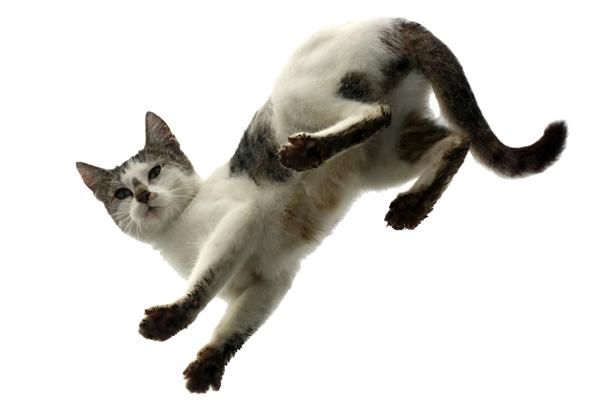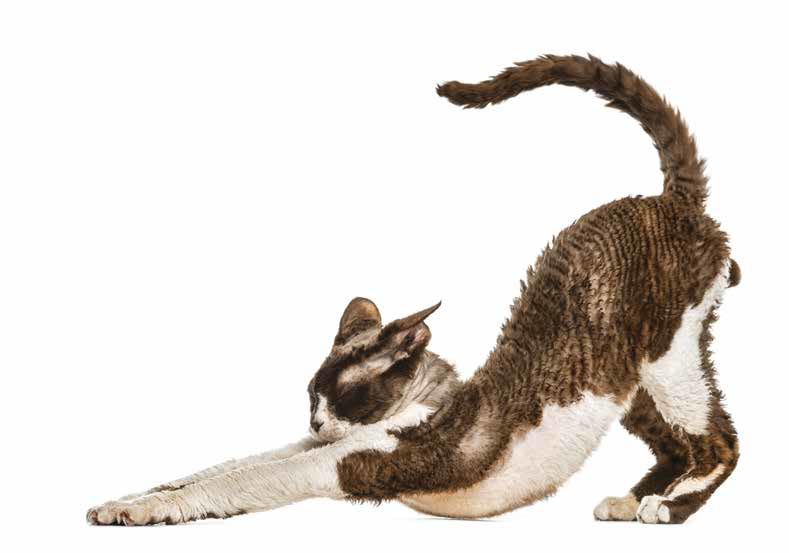Cats are fascinating creatures, and their skeletal structure is no exception.
One interesting thing about cats is the similarities their skeletal structure has with that of humans.
But while a cat’s skeleton may be similar to ours in some ways, there are also some significant differences. For example, cats don’t have collarbones, which means they can squeeze their bodies through surprisingly small spaces.
Cats also have seven cervical vertebrae which allow them to turn their heads much further around than we can.
Then there is the issue of shoulders—do cats have shoulders?
Well, we will answer this and many other related questions below, so keep reading to find out!
Do Cats Have Shoulders?
Cats do have shoulders, but they are not exactly like our own.
For one thing, cats’ shoulder blades are attached to their ribs further back than ours are. This allows them to stretch their front legs out further when they walk or run.
Additionally, cats’ shoulder joints are more flexible than ours, which gives them a greater range of motion.
Finally, cats’ muscles and tendons are arranged differently than ours, allowing them to twist their front legs in a way that we cannot.
All of these adaptations help make cats the agile creatures that they are.
What Is A Cat’s Shoulder Called?
The shoulder of a cat is called the scapula. The scapula is a large, flat bone that forms the back part of the shoulder girdle.
It attaches to the humerus (upper arm bone) at the glenoid cavity (shoulder socket).
The scapula provides attachment points for muscles that move the forelimb. It also helps protect the thoracic cavity (chest) from damage.
The scapula is hidden beneath the fur and skin, making it difficult to see.
However, if you look closely, you can see the scapula poking out when a cat moves its legs.
Cats have very powerful leg muscles and can jump great heights and distances. They use their strong legs to run, climb, and leap after prey. Their claws help them grip surfaces and climb trees.
Cats are digitigrade animals, meaning they walk on their toes instead of their whole foot. This gives them a greater range of motion and helps them run faster.
Do Cats Have Four Shoulders?

Technically, cats do not have four shoulders. But they do have two more sets of shoulder muscles than we do—and that might be the reason why they’re able to squeeze into so many tiny spaces.
The average house cat has 30 bones in its spine, compared to our measly 26.
And while a human skeleton is made up of 206 bones, a cat’s has 230.
Some of those extra bones give cats their flexible spines and gracefully curved necks—but others help them out with those pesky shoulders.
Also, in addition to the regular deltoid muscle that attaches the humerus (upper arm bone) to the shoulder blade, cats have two other pairs of muscles attaching their shoulder blades to their spine: the supraspinatus and the infraspinatus.
These muscles allow cats to move their shoulder blades independently from the rest of their spine—and that gives them a lot more flexibility in how they use their shoulders.
So, while your cat may not have four actual shoulders, she does have four sets of muscles working to control her shoulders—which might be why she can contort herself into some pretty crazy positions.
Related Post: Are Cats Liquid Or Solid?
Shoulder Joint Conditions in Cats
The shoulder joint is a ball-and-socket type of joint that allows for a wide range of motion.
It is held together by ligaments and tendons, which can be susceptible to injury or disease.
Shoulder problems are relatively uncommon in cats, but when they do occur, they can cause a great deal of pain and mobility issues.
There are several ligaments and tendons that support the shoulder joint. The most commonly affected structures are the supraspinatus tendon and the biceps tendon.
These tendons attach the muscles to the bone and help to stabilize the joint. When these structures become damaged or diseased, it can lead to significant pain and disability.
According to PetMed, treatment for shoulder conditions will vary depending on the specific problem.
In some cases, rest and conservative management may be all that is needed.
However, more serious problems may require surgery to correct the issue.
If your cat is having any type of shoulder pain or mobility issues, it is important to have them seen by a veterinarian as soon as possible.
Early diagnosis and treatment can often help to improve the prognosis and quality of life for these patients.
Conclusion
Cats have two shoulders but they also have two more sets of shoulder muscles than we do—and that might be why they’re able to squeeze into so many tiny spaces.
Cats also have four sets of muscles working to control their shoulders—which might be why they can contort themselves into some pretty crazy positions.
Related Post: Do Cats Have Bones In Their Tails?

Hi! I am Eleanor Price. I started this website after my cat, Louie, almost died from a case of botulism (a type of food poisoning often caused by bacteria that grow on food items). Turned out that my cat’s diet was the problem. I have made it my duty to provide the best information and recommendations about everything cat lovers need to know about their felines’ health and wellbeing. My goal is to find the most informative content on anything feline-related and share it with fellow hardworking kitty lovers.

